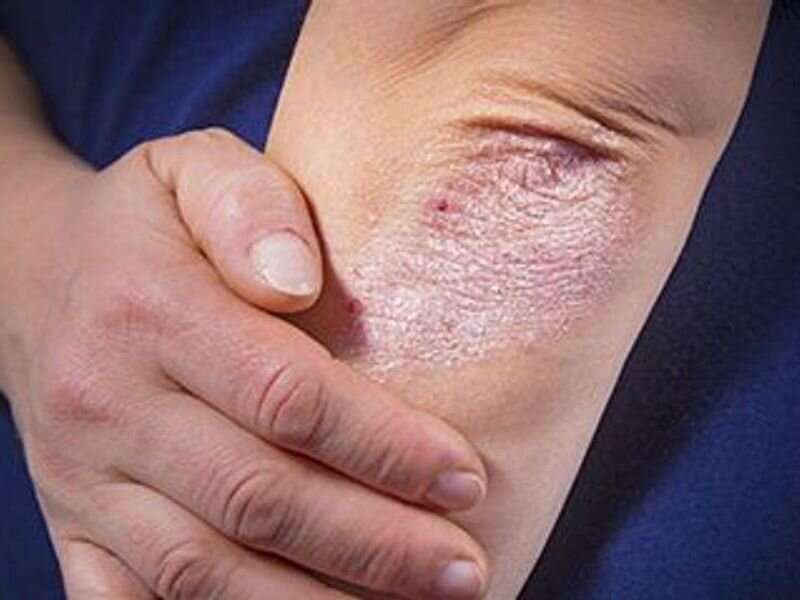
A new nomogram may assess the risk for psoriatic arthritis (PsA) in patients with plaque psoriasis, according to a study published online Jan. 20 in the Frontiers in Immunology.
Panpan Liu, from Central South University in Changsha, China, and colleagues recruited patients with plaque psoriasis or PsA and collected data on characteristics, skin lesions, and nail clinical manifestations. Features were selected and used to build a model to predict risk of PsA. Calibration, discrimination, and clinical utility of the model were evaluated. The model was validated externally in two separate cohorts.
The researchers included age at onset, duration, nail involvement, erythematous lunula, onychorrhexis, oil drop, and subungual hyperkeratosis as predictors for the nomogram. The predictive model had a C-index of 0.759, indicating good calibration and discrimination. The prediction model had an area under the curve of 0.7578092. In the internal and external cohort validation, excellent performances were seen for the C-index (0.741, 0.844, and 0.845, respectively). The PsA nomogram had good effect in guiding clinical practice as indicated by the decision curve.
“The assessment of the risk of PsA in plaque psoriasis patients can help physicians guide patients’ lifestyles and make an individualized treatment plan,” the authors write.
HealthDay

